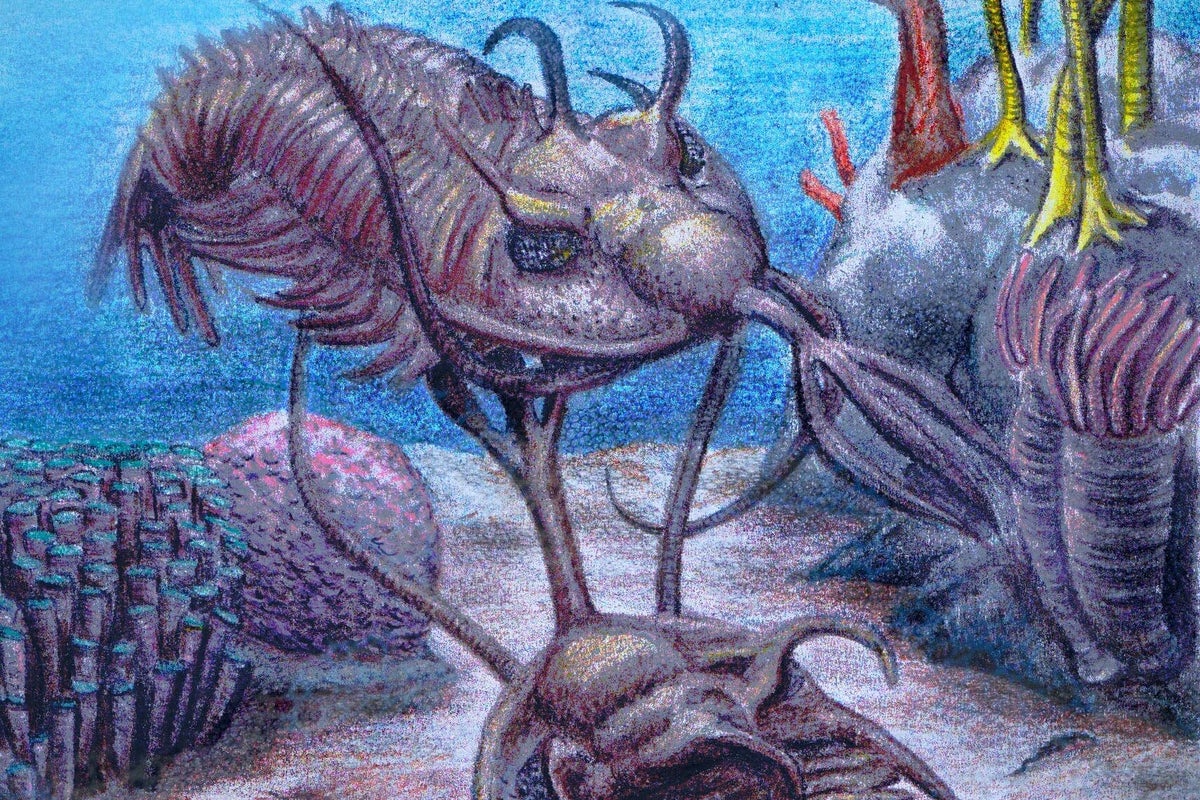
Scientists have revealed the oldest known example of a sexual combat weapon similar to the structures found in modern-day rhino beetles.
A unique specimen of a trilobite trident, showing four rather than three tines (or prongs), suggests the structures may have been used for combat rather than feeding, as previously thought.
Researchers say this is a rare example of fossil anatomical weaponry and unlocks important information regarding the form and sexual behaviours of this extinct arthropod group.
Trilobites were invertebrate animals with an exoskeleton, a segmented body and paired jointed legs.
The evolution of sexually motivated competition in animals is hundreds of millions of years older than we thought— Professor Richard Fortey, Natural History Museum
The analysis of the Walliserops trifurcatus fossil suggests the prongs may have been used in combat and competition for mates such as male jousting to gain female favours.
It had previously been thought the trident was used for feeding.
However, the four-tined creature had grown to full maturity and adult size.
The scientists suggest malformations in a variety of living organisms show that a malformation in a feeding structure would possibly have hindered the survival of the individual.
This supported the theory that the trident may have played a sexually selected function instead.
Professor Richard Fortey, scientific associate at the Natural History Museum and co-author of the paper, said: “The extraordinary Devonian trilobite Walliserops carried a unique, giant trident on its head, the purpose of which has long been a mystery.
“We now believe that it was used for ‘jousting’ between males striving for dominance.”
Examples of sexually selected traits can be found in many living and fossil specimens and involve a process where traits are selected because they enhance fertilisation success.
The individual W.trifurcatus fossil was found in Morocco.
Scientists used comparisons of specimens including the unique fossil to map and compare the structures to the similar morphologies found in Dynastinae (rhino) beetles.
According to the researchers, the results showed that the trident shares a similar structure and function to those used in sexual competition and combat, making this the oldest example of its kind.
Prof Fortey said: “The evolution of sexually motivated competition in animals is hundreds of millions of years older than we thought.”
The findings are published in the PNAS journal.







